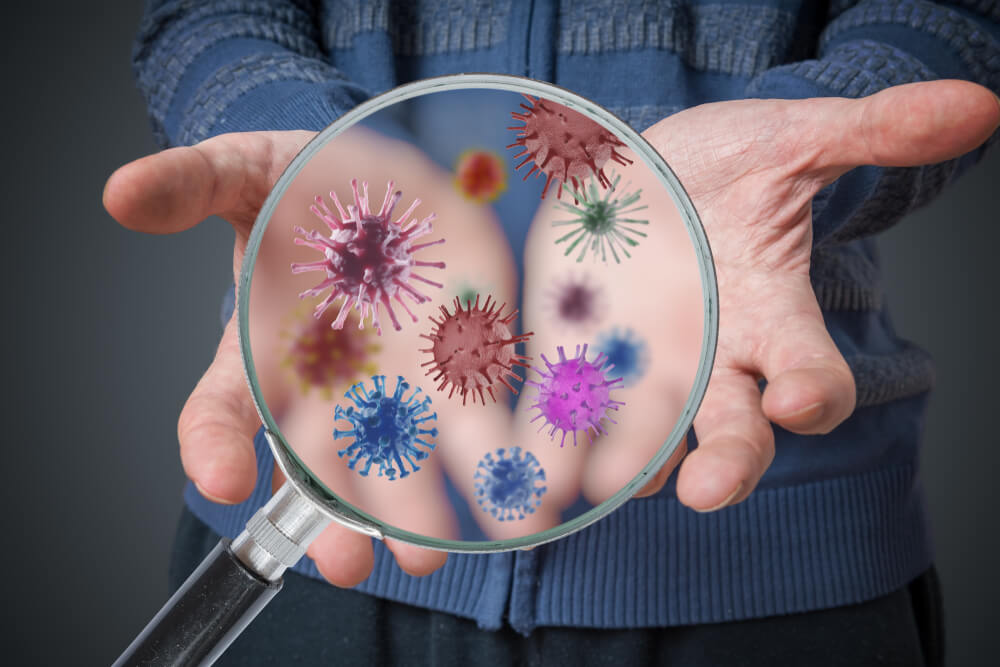To everyone who has children or interacts with children on a regular basis, we salute you. You understand better than most how quickly germs can spread. One minute you are healthy as a horse, and the next minute you are experiencing cold-like symptoms that you may have picked up from one of the toddlers you were picking up while they picked their noses. Teaching kids about germs can seem like a daunting task but it can be done. The human body is pretty amazing and sharing facts about how germs spread for kids can be made into a fun activity. While they are young, their minds are like sponges and they will absorb as much information as you can give them when you’re creative in your approach.
One thing we can all agree on: kids do a lot of disgusting things simply because they don’t know any better. Fun and educational activities can make teaching how germs spread a much more enjoyable experience for everyone. Simply reminding kids to wash their hands on a regular basis may not be enough. At Kings Bay Pediatrics, we are committed to providing exceptional care for children and families. We realize the importance of instilling the importance of healthy lifestyle habits early on. Before we take a deep dive into how to teach facts about germs for kids, let’s define what germs are in their entirety.
Types of Germs
There are several types of germs found all over the world. However, there are four consistent germs that can be found in most places that include bacteria, viruses, protozoa, and fungi. These germs do not discriminate. They invade people, plants, and animals but can cause different reactions. They are tiny living organisms that can cause disease and sickness when exposed to them with varying levels of symptoms.
- Bacteria – These tiny one-celled organisms get their nourishment from the environments they live in, including the human body. Once they’ve settled in, they will grow and multiply both inside and outside the body and wreak havoc on immune systems. You may be most familiar with infections, sore throats, ear infections, common colds, and even pneumonia. Still, some bacteria can be beneficial by keeping the body in balance like those found inside our intestines that help with efficient digestion. Other beneficial bacteria are used to create vaccines in laboratories that keep us from getting sick.
- Fungi – These organisms are multi-celled and plant-like. They thrive in warm, damp environments but are incapable of making their own food so they find their nutrients by feeding off of other plants, animals, and people. Sounds pretty gross right? While some fungi are not harmful to people, others certainly are. You may be most familiar with mold or athlete’s foot. Neither one of these unpleasant germs are welcome and both multiply in warm, damp places.
- Virus – These resilient and sometimes dangerous organisms must live inside other cells to grow. Wherever a virus chooses to make a permanent home, the body which it inhabits is called a host. Once they’ve taken residence, they spread and multiply quickly causing serious illness. Some viruses you may know about include measles, chickenpox, and the ever-present flu. Always get your flu shot!
- Protozoa – These less discussed one-celled organisms can do major damage and come in many different forms. Like fungi, they enjoy living in moist environments but can be shapeshifters as well. Many are parasitic, meaning they live inside other organisms and feed off them to survive. They are known to display animal-like qualities in the way they move and how they acquire nutrition. These germs are most responsible for intestinal issues that lead to belly pain, diarrhea, and nausea.
Sharing Is Not Caring with Germs

If your kids are wondering what do germs look like, look no further than a microscope. This may be easier said than done if you don’t have immediate access to one. But for those who do, it’s one of the best ways to see germs up close and personal. First-hand knowledge for kids can make a huge impact on how they process information and seeing germs under a microscope can be eye-opening. The more kids know, the better.
There are other options for interactive activities that show how germs spread for kids to be a part of and learn from. Using fun science activities is always a great way to get the kids engaged. These are effective visual stimulants with immediate impact. We’ve provided a brief list of some ideas you can use today:
- Glitter – What better way to demonstrate how quickly germs spread for kids than to use glitter! Before you begin, you should explain to kids that germs are not visible to the naked eye and that the glitter will represent germs as if we can see them. Now, place a handful of glitter into the hands of one child and ask them to shake the hands of another child. Tell them to rub their hands together and spend the rest of the day with glitter on their hands. Remember to express to the kids that the glitter represents germs that spread through coughing and sneezing. By the end of the day, they will see glitter everywhere including doorknobs, books, their faces, clothes, and desks, while getting a full understanding of how quickly germs can spread. This is a great time to tell the kids to cover their mouths and to wash their hands to avoid spreading germs.
- Yeast – This is also a really simple activity for teaching facts about germs for kids. First, label four ziplock bags as “control,” “cough,” “touch,” “contact” and have a loaf of bread on hand. For each bag, take one slice of bread and have one child cough on a slice of bread, one child rub their elbow or hands on another, and rub one of the slices of bread on a desk or other object. The “control” bag should have a slice of bread that hasn’t come in contact with any germs. Use a spray bottle full of water and spritz each bag to add moisture and place each bag in a warm dark location like a cupboard and watch the yeast grow. Since bread has yeasts and sugars, it is an excellent way to demonstrate germ growth.
- Books – Teaching your child about how germs spread and encouraging them to read is like killing two birds with one stone. They not only learn about the importance of maintaining healthy hygiene, but they learn how to stay informed through reading. There are plenty of good books that teach facts about germs for kids. It could serve as a great bedtime story! Some of the best we suggest to pick up are:
- Germs Make Me Sick
- Germs are Not for Sharing
- Sherm the Germ
- Germs
- A Germ’s Journey
- Videos – Kids can be more receptive to visuals so using a video in teaching kids about germs can be a highly impactful way of spreading the word. Through the use of interesting characters with names like “Super Bacteria” and engaging plot twists, kids can get a good understanding of how to prevent germs from spreading. You can find these videos on Youtube and other internet platforms that are free and available.
Our Team Is Here to Help
For 45 years, we’ve been committed to providing compassionate and evidence-based medical care to newborns, children, and adolescents. First opened by Dr. Phil Paul and Dr. Ken Flicker, Kings Bay Pediatrics has grown into a premier pediatric office serving Broward County, Florida Keys, and the Caribbean. As part of the ToplineMD Alliance, we pride ourselves on exceptional customer service, board-certified physicians, and top quality medical facilities and networks.
In efforts to maintain timely customer service, we do not accept walk-ins. However, you are welcome to give us a call and schedule an appointment today.


